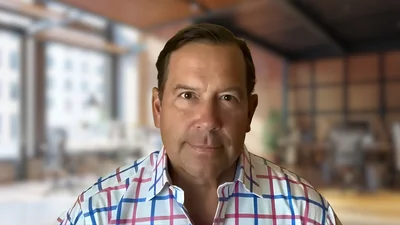Adobe Stock
Adobe Stock
Illinois voters who cast ballots in the 2020 General Election but elect not to fill whether the state should have a graduated income tax could be just as critical to passage - or not - of the controversial measure, according to information on a data driven website.
Voters who don't select an option in the graduated income tax measure, support or not, become part of the "dropoff rate" that must be considered as part of the final vote, according according to information posted on Illinois Election Data.
"If the dropoff rate for the upcoming vote is only 1 percent, then it will simply need a Yes vote of 50.52 percent to pass," Illinois Election Data says. "If the dropoff rate is 15 percent, it will need a Yes vote of 58.84 percent to pass."

Illinois State House Speaker Michael Madigan (D-Chicago)
| twitter.com/speaker_madigan
Which means the higher the dropoff rate, the more difficult it will be to remove Illinois' flat tax from its Constitution and replace it with what Gov. J.B. Pritzker has been calling a "fair tax."
Illinois Election Data's owner, Scott Kennedy, previously worked in Democrat campaigns across the state, including two gubernatorial races, according to his bio on the website.
The graduated-rate state income tax made its way through the Democrat-controlled General Assembly this session mostly through the work of the majority party. Earlier this month, Democrats in the state Senate used their supermajority to pass the graduated-rate state income tax in that chamber before sending it onto the state House. Not one Republican in the Senate voted for the measure.
The House version of the graduated tax amendment made it to the floor late last week in the lead up to Memorial Day weekend largely due to the not-especially-transparent machinations of Illinois' powerful and longtime state House Speaker Michael Madigan (D-Chicago).
The legislation passed the House earlier today in a 73-to-44 vote, approving placement of the proposal to amend the state's constitution on the November 2020 ballot.
The measure doesn't require Pritzker's signature but will need support from either 60 percent of Illinois voters who cast ballots during the election or a simple majority of those who vote, depending on the dropoff rate.
Proponents and opponents have already been spending on television advertising "at a significant rate" and that can be expected to increase in the lengthy run-up to the 2020 election, Illinois Election Data says.
"That kind of paid media attention will probably reduce the dropoff rate lowering the threshold needed for passage," the website says. "That presents a difficult predicament for opponents. By bringing more attention to the measure, even negative attention, it will likely reduce the dropoff rate lowering the threshold needed for passage but they really don't have better options. If opponents encourage voters to skip voting on the measure then they run the risk of only Yes voters voting, which isn't an improvement."
It also isn't clear whether the voters' decision on the measure will be known by the morning after, according to Illinois Election Data.
"What is clear though is that unless the Yes votes are well above 60 percent, the outcome may not be known for certain until well after Election Day," the website says. "It's entirely possible we have to wait until the vote totals are certified to be able to run the simple majority calculation on ballots cast."





 Alerts Sign-up
Alerts Sign-up